After several years, we at CatSynth are resuming our tradition of sharing wild cats on earth day. Those who follow our Facebook page are regularly treated to photos and videos of wild cats. We share a few favorites, along with some of our own.
A personal favorite of ours is the fishing cat (Prionailurus viverrinus). It is unique in that is adapted for swimming and hunting in the water. The sleek fur, streamlined shape, and folded ears attest to this adaptation.
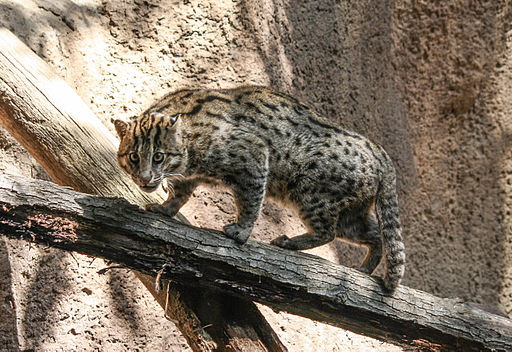
[By Bernard Gagnon [CC BY-SA 3.0 or GFDL], from Wikimedia Commons]
The fishing cat has discontinuous populations in rainforests of South Asia and Southeast Asia. It is listed as Vulnerable, primarily due to habitat destruction. The Greensboro Science Center in Greensboro, North Carolina, recently posted this video featuring a mother fishing cat teaching her kitten their aquatic heritage.
Another lesser-known cat is the oncilla (Leopardus tigrinus). It is among the smallest of wild cats, similar in appearance to but significantly smaller than the well-known ocelot.
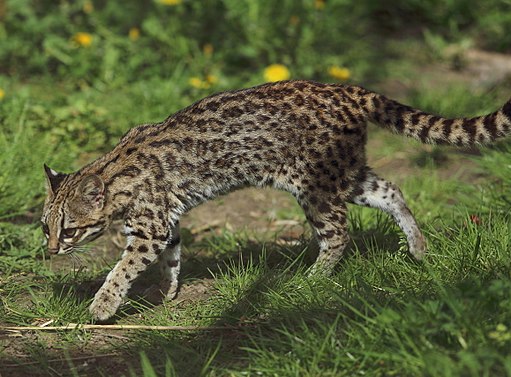
[By Groumfy69 [CC BY-SA 3.0], from Wikimedia Commons]
The oncilla lives throughout Brazil as well as the highland tropical forests of Colombia, Ecuador, and Peru. There is even a recorded separate population in Panama. It is listed as Vulnerable in IUCN classification, mainly due (once again) to habit loss.
Both of these cats and many others have a similar spotted look that works well in their forested environments. Our old pal the Pallas cat (Otocolobus manul), also known as the manul, is quite a different beast altogether. It has a squat shape, fluffy fur and a gray color that are suited to its cold rocky environment in Central Asia. Here is a manual I encountered at the Prospect Park Zoo in New York some years ago.
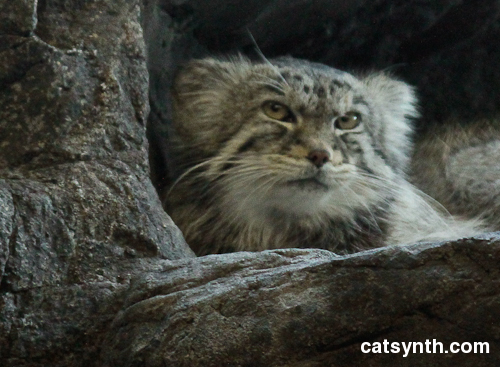
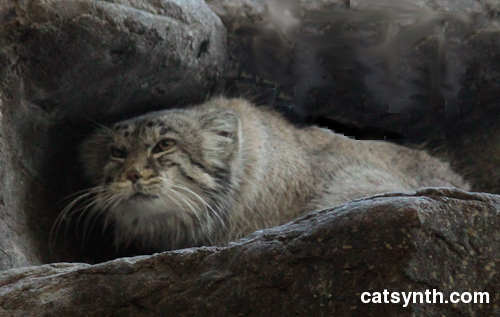
More recently, we attended the Feline NightLife at the California Academy of Sciences, and got to see many wild cats courtesy of Safari West, including this beautiful serval.
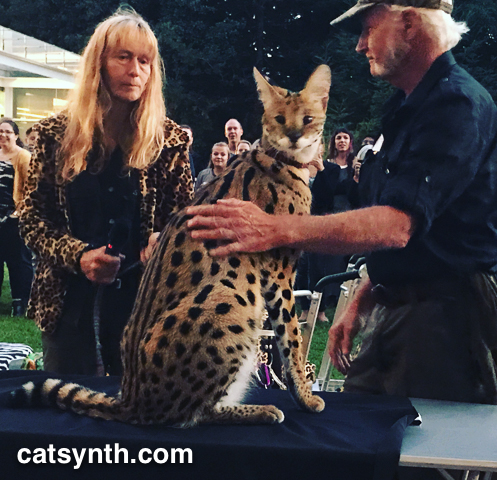
While not endangered, servals have been frequently been captured and bred as exotic pets. They do, however, remain wild predators and their domestic captivity usually goes badly for human and feline alike. As our host from Safari West said, “they do not make good pets, but they will eat good pets.” Below is a “cat” that actually is not a cat at all, but a separate genus, the genet. If they had not told me, I might have guessed it was a fishing cat.
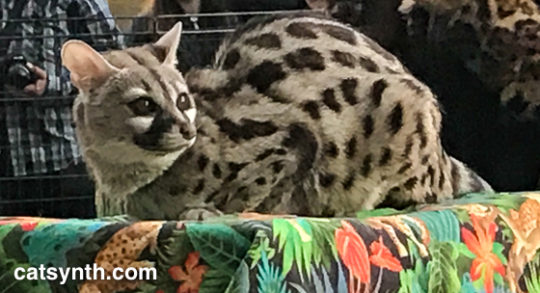
Sadly, Safari West was affected by last year’s devastating Tubbs fire in Sonoma County. Several structures burned, and the co-founders lost their own home. Fortunately, most of the property was spared and the animals all made it through the conflagration safely, and Safari West reopened for tours and programs in late November. You can read more about their experience (and find out how to support them) here.
We conclude with our friends at ISEC Canada, an organization dedicated entirely to the conservation of small wild cats. They have many projects underway, including a study of the black-footed cat, another lesser-known small wild cat from southern Africa. It’s esimated range covers parts of Namibia, Botswana and South Africa.
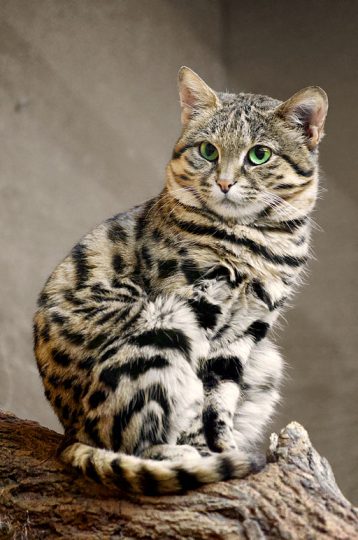
[By Patrick Ch. Apfeld, derivative editing by Poke2001 [CC BY 3.0], from Wikimedia Commons]
The black-footed cat is adorable, and its face closely resembles many housecats. But once again, this is a wild animal and does not belong in a domestic setting. We applaud the work of ISEC Canada and other organizations who study and help to preserve them in their wild habitats.


































 This year, we focus on South America (for reasons beyond the scope of this article). The Andean region is home to some rather intriguing cats that we have discussed in the past. Perhaps the most intriguing and most endangered remains the gato andino, or
This year, we focus on South America (for reasons beyond the scope of this article). The Andean region is home to some rather intriguing cats that we have discussed in the past. Perhaps the most intriguing and most endangered remains the gato andino, or  In reading about the Andean cat, I also learned about the
In reading about the Andean cat, I also learned about the 




 The huiña may be related to the more common
The huiña may be related to the more common 
 With our recent interest in China, we thought we would feature one of China’s endangered cat species, the
With our recent interest in China, we thought we would feature one of China’s endangered cat species, the 
 Another critically endangered wild cat in the United States is the Texas subspecies of the
Another critically endangered wild cat in the United States is the Texas subspecies of the 
 We start again with the
We start again with the  Another endangered cat of India and Southeast Asia is the
Another endangered cat of India and Southeast Asia is the  Few wild cats resemble their domestic counterparts more than the
Few wild cats resemble their domestic counterparts more than the  The Oncilla closely resembles the better known
The Oncilla closely resembles the better known 
